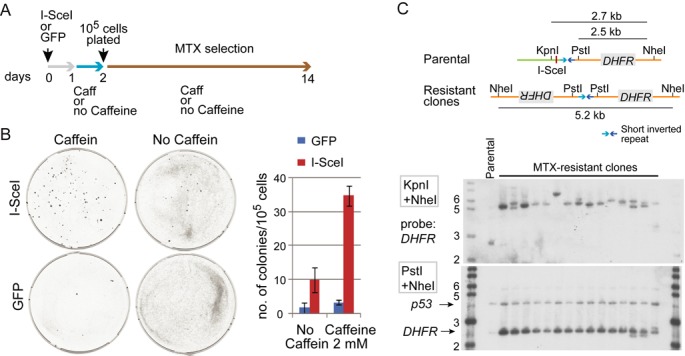Figure 4.

ATM/ATR checkpoint independently suppresses gene amplification proficiency. (A) Experimental design. Cells with wild-type Mre11 were transiently transfected with either I-SceI endonuclease expression vector (inducing a site-specific chromosomal DSB) or a control, GFP expressing vector. 105 cells were plates and selected with MTX for 12 days. (B) MTX-resistant colonies arise more frequently cells with checkpoint abrogated by the treatment with caffeine. Left: representative plates from each experimental setting. Right: the average number of MTX-resistant colonies from three independent experiments. (C) Palindromic gene amplification in cells resistant to MTX. Top: double digest of DNA with KpnI and NheI confirmed that all the resistant cells underwent palindromic DHFR duplication. Briefly, the KpnI site was located distal to the I-SceI site and, if a DSB occurred at the I-SceI site and induces palindromic duplication, the KpnI site would be lost and the NheI fragment would be detected by a probe (DHFR). Consistent with palindromic duplication, all the resistant cells exhibited fragments of roughly 5 kb in size. Bottom: double digest of DNA with PstI and NheI confirmed DHFR amplification. This double digest yielded a 2.5 kb fragment from both parental and resistant cells, and the intensity of the fragment represented the copy number of DHFR. In all resistant cells, the intensities were much higher than that of parental cells (designated as P).
